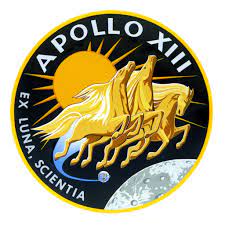In 1970, NASA's Apollo 13 mission became one of the most harrowing and dramatic episodes in the history of space exploration when an oxygen tank explosion crippled the spacecraft, putting the lives of the crew in grave danger. The mission, which was intended to be the third manned lunar landing, was thrown into chaos as the astronauts and ground control worked together to overcome a series of critical failures and technical challenges in order to safely return the crew to Earth. The Apollo 13 mission launched on April 11, 1970, with astronauts Jim Lovell, Jack Swigert, and Fred Haise on board. The crew's mission was to land on the moon and explore the Fra Mauro region, but their plans were derailed when an oxygen tank in the service module exploded, causing a cascade of failures that threatened the safety and viability of the spacecraft. The explosion not only deprived the crew of vital life support systems but also damaged the spacecraft's propulsion and navigation systems, putting the crew's lives at risk and jeopardizing their chances of returning home. In the wake of the explosion, the crew and ground control faced a race against time to troubleshoot the myriad problems plaguing the spacecraft and devise a plan to bring the astronauts back to Earth safely. The crew was forced to shut down the command module and rely on the lunar module as a lifeboat, conserving power, oxygen, and water as they navigated through the cold and dark expanse of space. The crew's survival hinged on their ability to work together, stay calm under pressure, and innovate on the fly to overcome the obstacles in their path. One of the most critical challenges facing the crew was the need to conserve power and resources in order to make it back to Earth. The astronauts and ground control collaborated to develop innovative solutions to extend the life of the spacecraft's systems, including using the lunar module's descent engine to adjust their trajectory and conserve fuel, as well as improvising a makeshift carbon dioxide scrubber to remove toxic gases from the cabin. The crew's resourcefulness, ingenuity, and teamwork were instrumental in their ability to overcome the odds and navigate the perilous journey back home. As Apollo 13 made its way back to Earth, the world held its breath, anxiously awaiting news of the crew's fate. The successful reentry and splashdown of the spacecraft on April 17, 1970, marked a moment of triumph and relief for NASA and the global community, as the crew emerged from the capsule unharmed and in good spirits. The safe return of Apollo 13 was a testament to the bravery, skill, and determination of the astronauts, ground control personnel, and engineers who worked tirelessly to bring the crew home against all odds. The Apollo 13 mission stands as a shining example of human resilience, courage, and ingenuity in the face of adversity. The crew's heroic efforts to overcome catastrophic failures and technical challenges to return safely to Earth captured the world's imagination and inspired generations of space explorers and engineers. The lessons learned from Apollo 13 have informed NASA's approach to safety, risk management, and mission planning, ensuring that future space missions are conducted with the utmost caution and preparedness.
1970 NASA’s Apollo 13 safely returns after critical failures
